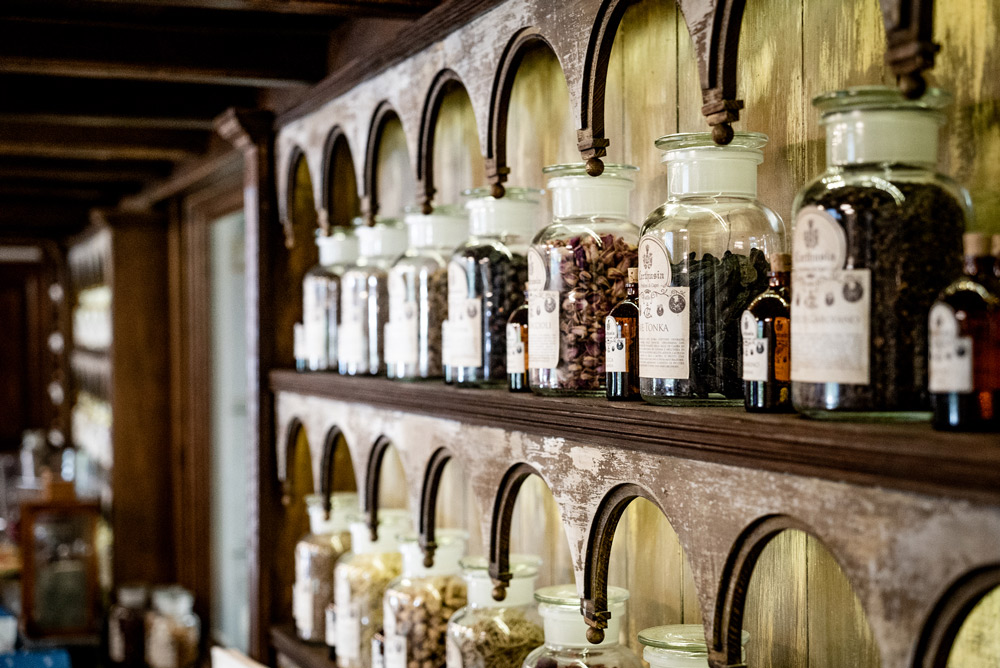A squirt and then another because, as you know, you can never have enough… But when you think about it, who could ever imagine that the simple (even if only apparently) gesture of spraying perfume, at the end of each dressing ritual, is actually an important piece of history? Let’s discover together the most important milestones in the history of perfume!
The History of Perfume from Ancient Egypt
To begin with, the origins of the perfuming ritual are very ancient. It is even said that they date back to 3000 BC, a time in which the ancient Egyptians gave the custom a double connotation: one sacred and one profane.
As far as the religious sphere is concerned, perfume was better known as “divine sweat” as effluents of particular natural substances were considered as moments of unification between man and divinity. Furthermore, perfume was used as a tool to get in touch with the deceased, especially in the technique of embalming bodies.
In a more profane field of application, however, perfumed oils, ointments and balms were carefully and delicately spread on the body by Egyptian women as a real rite of seduction. A historical episode, the meeting of Tarsus, saw Queen Cleopatra prepare herself with aromatic ointments to welcome Marco Antonio. Cleopatra decided to keep the politician waiting in order to increase his desire for her, arriving later on a ship full of incense that left a very fragrant trail.
In the end, thanks to the perfume, Cleopatra succeeded in bewitching Marco Antonio, also because the room prepared to house the man and intended for the first meeting of love was meticulously adorned with rose petals and aromatic herbs, which recreated an magical atmosphere and enveloping scent.
From the same period there is also Plutarch who offers a precious testimony regarding the most famous and widespread fragrance, especially among the pharaohs: the Kyphi, composed of a large number of essences. As the Greek philosopher and historian writes: “sixteen materials: honey, wine, raisins, cyperus, resin, myrrh, rosewood. Mastic, bitumen, fragrant rush, patience, juniper, cardamom and aromatic calamus are added, but not by chance, but according to the formulas indicated in the sacred books”. To these, after several studies, cinnamon, mint and pistachio were also added.
The Kyphi was purely used to relax the senses, sweeping away all worries in order to promote sleep as well. Relaxation, however, was not the only intended use of perfume for the Egyptians, who used it by spreading it on their hair and private parts to improve their amorous performances.
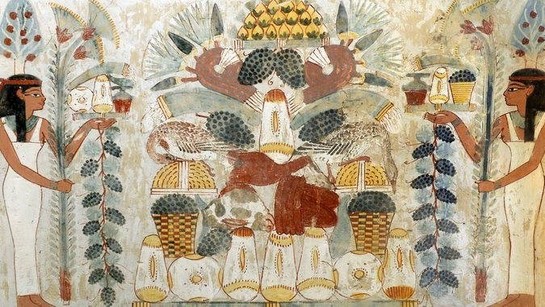
The Greeks and Perfume: History in the Hellenic Empire
The perfume continued to have a sacred connotation even in 1500 BC, in the ancient Hellenic civilization, when it was believed to have the power to reveal the existence of divinities. In particular, during funerals, the bodies of the deceased were wrapped in scented sheets, to then be burned together with plants such as violets, roses and lilies, considered symbols of eternity at the time.
In the absence of soap, in ancient Greece perfumed oils and ointments were also used for personal hygiene: these were stored in special containers called “alabastron”, terracotta vases which, due to their narrow and long shape, recalled amphorae.
Perfumes, called by the Greeks “euodia”, i.e. good smells, enjoyed great fame in the city of Athens thanks to their therapeutic virtues. Some were even exported throughout the Mediterranean basin: in particular, the “susinon” with the delicate notes of the lily, and the “kipros” with the fresh notes of mint and the citrus notes of bergamot.
The great importance of perfume in the Hellenic era also results from a basic text of ancient perfumery, the “Treatise on odors” (despite the absolute ban on its use sanctioned by the illustrious Socrates).
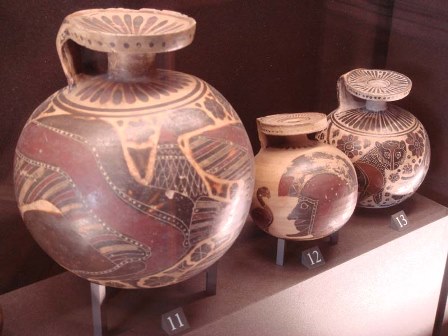
The Perfumes of the Roman Empire
The history of perfume had a big evolution in the flourishing period that dates back to the Roman Empire. The term “perfume”, in fact, comes from the Latin “per fumum”, which means through the smoke. This is because the priests, to ask the gods for favor, threw perfumed ointments on the braziers, creating a large cloud of perfumed smoke that rose up to the sky.
However, it was not only the religious sphere that used perfume for their rituals. In fact, many scenes of daily life of the time saw the patricians reserving moments of relaxation in the baths called “unctorium”, during which they were massaged with perfumes mixed with oils or even wine.
The occasions for conviviality and sharing represented by banquets, then, were perfect uses for perfumes, which helped to recreate the otium atmosphere so desired at that time. Drops of perfumed oils mixed with water were spread on the tables and tricliniums intended for diners. Furthermore, the slaves placed doves in bowls of water mixed with perfumed oil, so that, during the meal, they were left free to fly and aromatize the environment thanks to their flapping wings.
Furthermore, as was already the habit for Egyptian and Greek women, even the Roman ones used perfumes for the care and beauty of the body. In particular, these inserted a mixture composed of herbs and scented flowers inside small cones intertwined in their hair: in this way, in the sun, the mixture melted and ended up perfuming their whole head. Not only women, however, loved to pamper themselves using perfume. It is said that even Cesare appreciated wrapping himself in his “telinum”, an oily perfumed ointment with notes of marjoram, sweet clover and fenugreek.
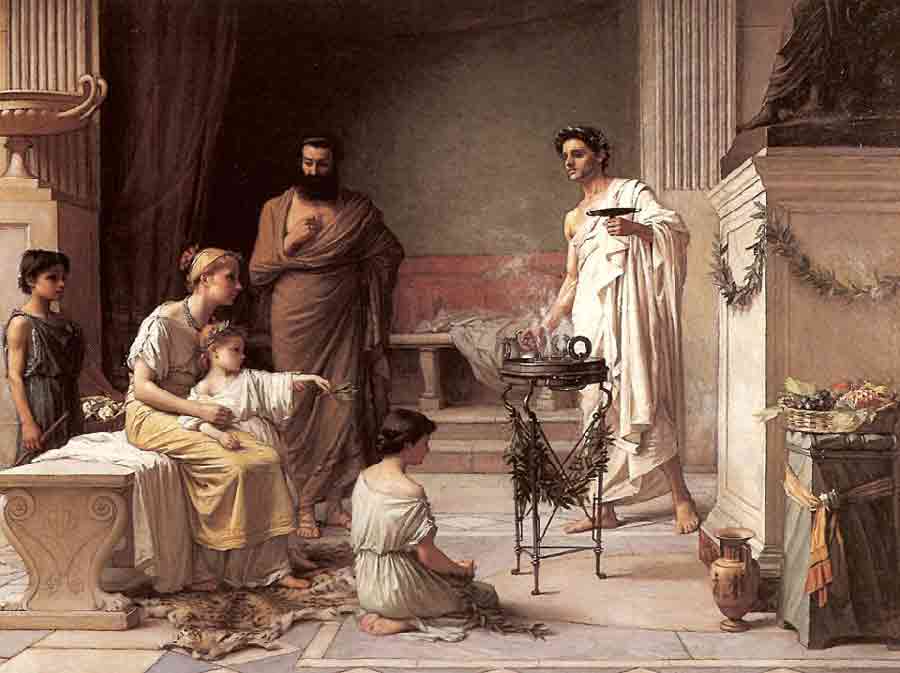
The Role of Perfumes in the Middle Ages
If perfume today represents that touch of class that no one can do without, it is undoubtedly due to the formulations and techniques that have been handed down thanks to the transcription and preservation of ancient texts by the Church, especially during the Middle Ages.
In any case, the custom of perfuming oneself was also maintained in this period. In particular, perfumes were used to flavor the bathrooms, or at banquets, when basins of scented water were offered to guests to rinse their hands between meals, since it was not customary to use cutlery.
Unfortunately, brought by the Genoese fleet returning from the Black Sea, the plague landed in Europe in 1347, ending up infecting the entire continent in a few months. Waters, oils, fumes, wines: everything was used in the hope of preventing contagion. The pomme d’ambra in particular was the instrument most used in the attempt: also known as a pomander, it was a pendant ampoule made of metal that contained fragrant mixtures composed of amber, balms, vanilla, musks and other essences. Worn around the neck, the sphere then gave off perfumes which were thus inhaled for aromatherapy purposes.
Also during the Middle Ages, the history of perfume experienced an essential turning point. In Salerno, in fact, the distillation of alcohol was discovered, which replaced the oil in the composition of the perfumes themselves.
A little later, the first perfume with a name was born, the so-called “Hungary water”: a fragrance created especially for Queen Elizabeth of Hungary on the notes of rosemary and lavender. It was said that this perfume had been given as a gift to the Queen as an elixir of eternal beauty: in all probability the formula worked, since her last wedding was celebrated at the remarkable age of 70.
Perfume in the Renaissance
Another key period in the history of perfume was the Renaissance, when the distillation process was greatly improved and higher quality spices and smells were sought. In fact, vanilla, cocoa, cinnamon, tobacco, pepper and other excellent raw materials began to enter the list of ingredients of the finest perfumes.
Of that era, among other things, there is one other thing that is certain: the best perfumers were all Spanish and Italian. However, if Italy lost this primacy, it was due to a Florentine noblewoman, the young Caterina de’ Medici. Her story tells us that her passion for perfumes was well known to all, so much so that in a short time all the ladies of the city began to imitate her and became passionate about perfumes. Caterina even had a fragrance created especially for her by the Dominican monks of Santa Maria Novella, at the time very famous for their perfume laboratories: the creation took the name of “Acqua della Regina”, with distinctly citrus notes.
Subsequently, however, Catherine left for France, where she awaited her marriage to her betrothed Henry II. In her transfer, the noblewoman wanted to bring with her her trusted perfumer Renato Bianco, later renamed by the French René Le Florentin, who opened his own shop, enjoying considerable success among other things. This meant that many Italian perfumers decided to seek their fortune in the romantic city of Paris, which in this wake elegantly managed to slip the primacy in perfumery away from Italy and Spain.
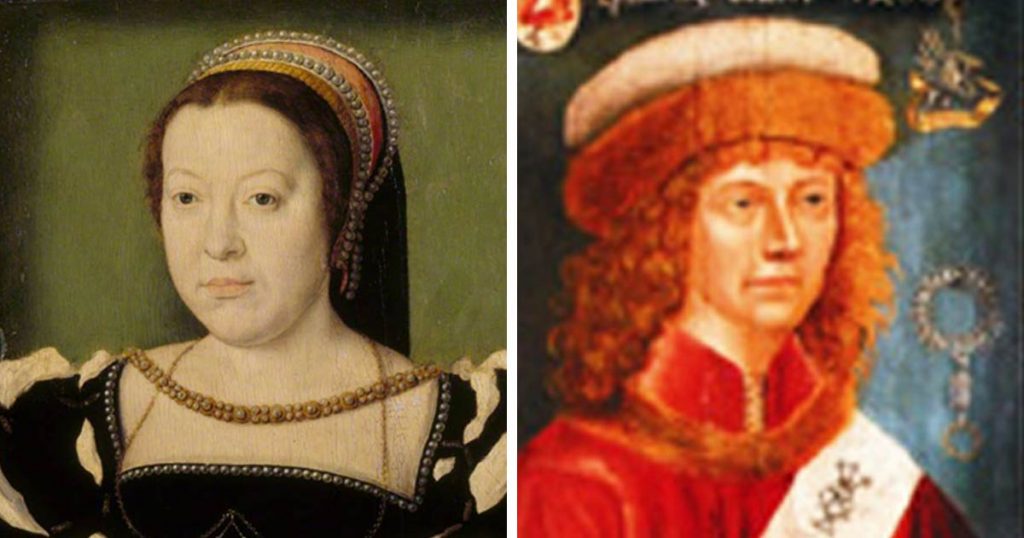
Despite this, the art of perfumery continued to be handed down in Florence and throughout Italy, and in particular in the monasteries where people loved to experiment with new essences and spices. It was precisely from a charterhouse, that of San Giacomo in Capri, that Carthusia (whose name derives from Certosa) was born with its long history of traction and love for perfume.
Moving to the medical field, however, perfumes were widely used in aromatic baths, the so-called “marmites à plantes”, which were used to cure some diseases. Subsequently, however, it began to be thought that water could be a means of transmitting diseases, and these baths were used less and less. Less water undoubtedly meant less personal hygiene, but also a greater diffusion of perfume, which began to be used more and more to cover bad smells.
Perfumes in the 19th Century
Fortunately, in the 19th century, personal hygiene once again took on an important role thanks to the diffusion of savoir-vivre treatises among the upper middle class, with a positive effect on society as a whole, which saw an example of virtue in the more affluent classes. The rediscovered care for the body led to the need to use perfume, which not even Napoleon Bonaparte was able to give up.
Here in 1828 Guerlain took the field, with the opening of his first perfumery Maison in Paris and becoming after a few years, precisely in 1853, “His Majesty’s official perfumer”. In fact, he created the first Eau de Cologne Impériale specifically for the Empress Eugenie, wife of Napoleon III, to whom she was given exclusive use for years before its launch on the market.
Simultaneously with the opening of the first French perfume house, the German chemist Friedrich Wöhler marked another great turning point in the history of perfume with his innovative synthesis process. The latter, which consists in the synthesis of urea (a laboratory organic compound), became the definitive replacement of the natural perfume. Among the first synthesized products we mention Fougère Royale d’Houbigant in 1882, on the notes of coumarin, and Jicky de Guerlain in 1889, with lavender and vanillin.
Since then, the study and experimentation on perfumes became more and more assiduous, so much so that thanks to an intuition of the London perfumer Eugene Rimmel, the aromas were divided into 18 groups, to classify the various notes more easily.

